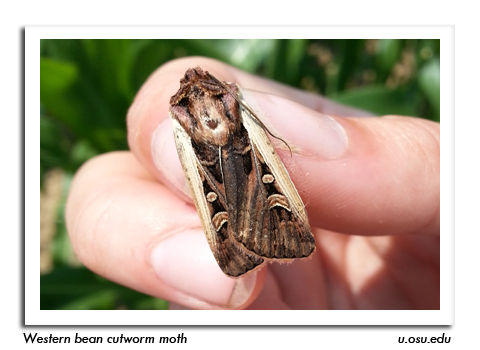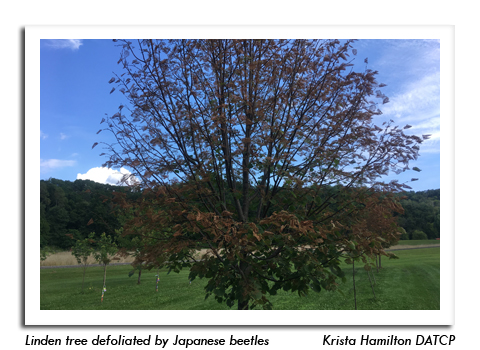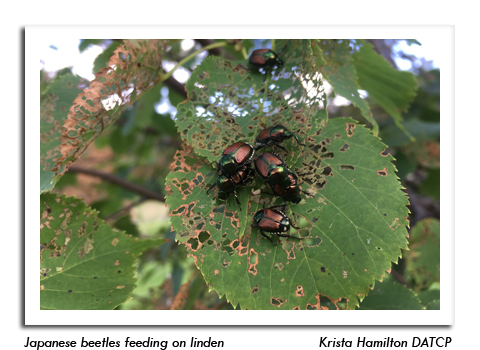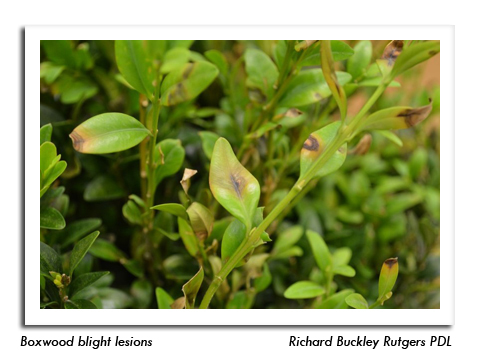
 |
|
|
Looking Ahead
Volume 63 Number 14 Date 08/02/2018 WESTERN BEAN CUTWORM - The annual flight has peaked and is now declining. Black light and pheromone trap counts have begun to decrease in areas of the state where degree-day accumulations are well past 2,838 (modified base 38°F/max 75°F), the point at which 75% emergence is expected. The high count for the week was 56 moths registered near Arlington in Columbia County. The cumulative state count to date is low at 503 moths in 55 traps, or approximately nine per trap. CORN EARWORM - Significant migration flights have not been documented as of August 2. This week's low count of 11 moths at 14 pheromone trap locations is a decrease from last week's total of 15 moths. Monitoring network participants should continue to replace lures on a weekly basis. JAPANESE BEETLE - Damage has intensified in field, fruit, nursery and vegetable crops. As an indicator of the prevalence of this insect in field crops this summer, beetles have been collected in about 55% (70 of 128) of the soybean fields sampled from July 23-August 1. Defoliation rates are approaching the 20% economic threshold for reproductive soybeans at scattered sites, and light to moderate silk clipping is common in the edge rows of corn. EUROPEAN CORN BORER - The degree day model for this pest suggests that summer flight has peaked throughout southern and central Wisconsin. Susceptible corn should be inspected for egg masses and larvae before 2,100 degree days (modified base 50°F) have been surpassed and the treatment window for second-generation corn borers closes. SOYBEAN APHID - Routine monitoring of soybeans is advised at this time as more fields enter the critical pod-filling stages. Most sites sampled by DATCP this week still contained very low average counts of less than 20 aphids per plant, though a few fields had averages near the 250 aphid per plant threshold and some may develop economic populations in the week ahead. Foliar treatment should not be considered until soybean fields have been thoroughly sampled to determine if the established threshold of 250 aphids per plant on 80% of the plants has been exceeded. BOXWOOD BLIGHT - This emerging disease of ornamental and native boxwood plants has been confirmed in a Kenosha County nursery. Boxwood blight has not previously been documented in the state. First found in the 1990s in England, the disease is now reported throughout Asia, Europe, New Zealand, and North America (in more than 24 U.S. states). Boxwood blight is a significant concern for the ornamental horticulture industry and is a threat to established landscapes. Nursery managers, landscapers, and homeowners should remain alert for the disease and contact their county UW Extension office if boxwood blight is suspected. -- Krista Hamilton, DATCP Entomologist 





|
|
|